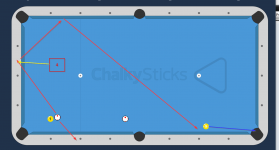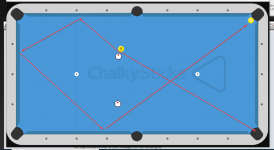I am trying to refine my position play on two rail position shots, both going into the rail with inside/follow (coming around the same pocket as the ob went into) as well as outside/draw (coming around the corner pocket across from where the ob went). Do any of you know a good rule of thumb for these shots? Things like: the cue ball will end up at center table if it goes into the first rail at a 45 degree angle, or the cue ball will come out of the second rail at a wider angle than it went into the first rail.
I'm mainly interested in navigating through traffic on these shots and/or setting up a good angle for a straight pool break shot. Position on these shots is an area I've identified to work on so I thought I'd start with this post.
Thanks!
I'm mainly interested in navigating through traffic on these shots and/or setting up a good angle for a straight pool break shot. Position on these shots is an area I've identified to work on so I thought I'd start with this post.
Thanks!

